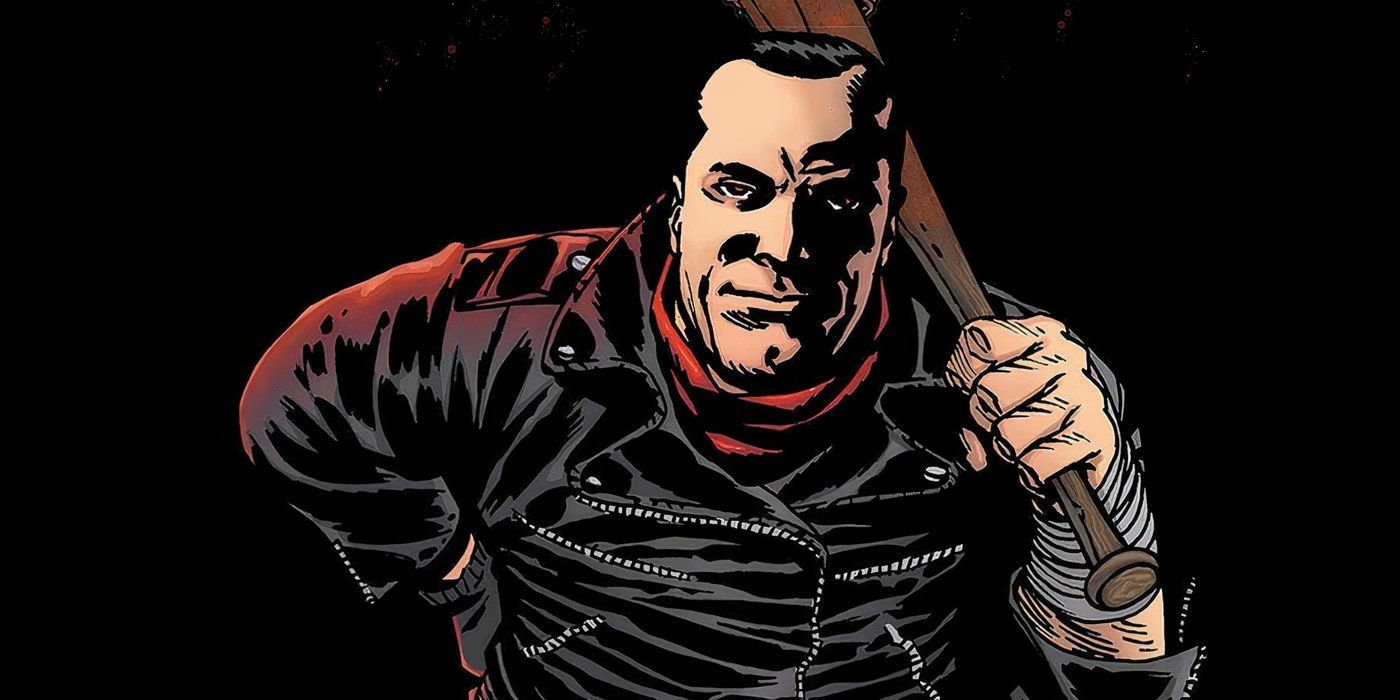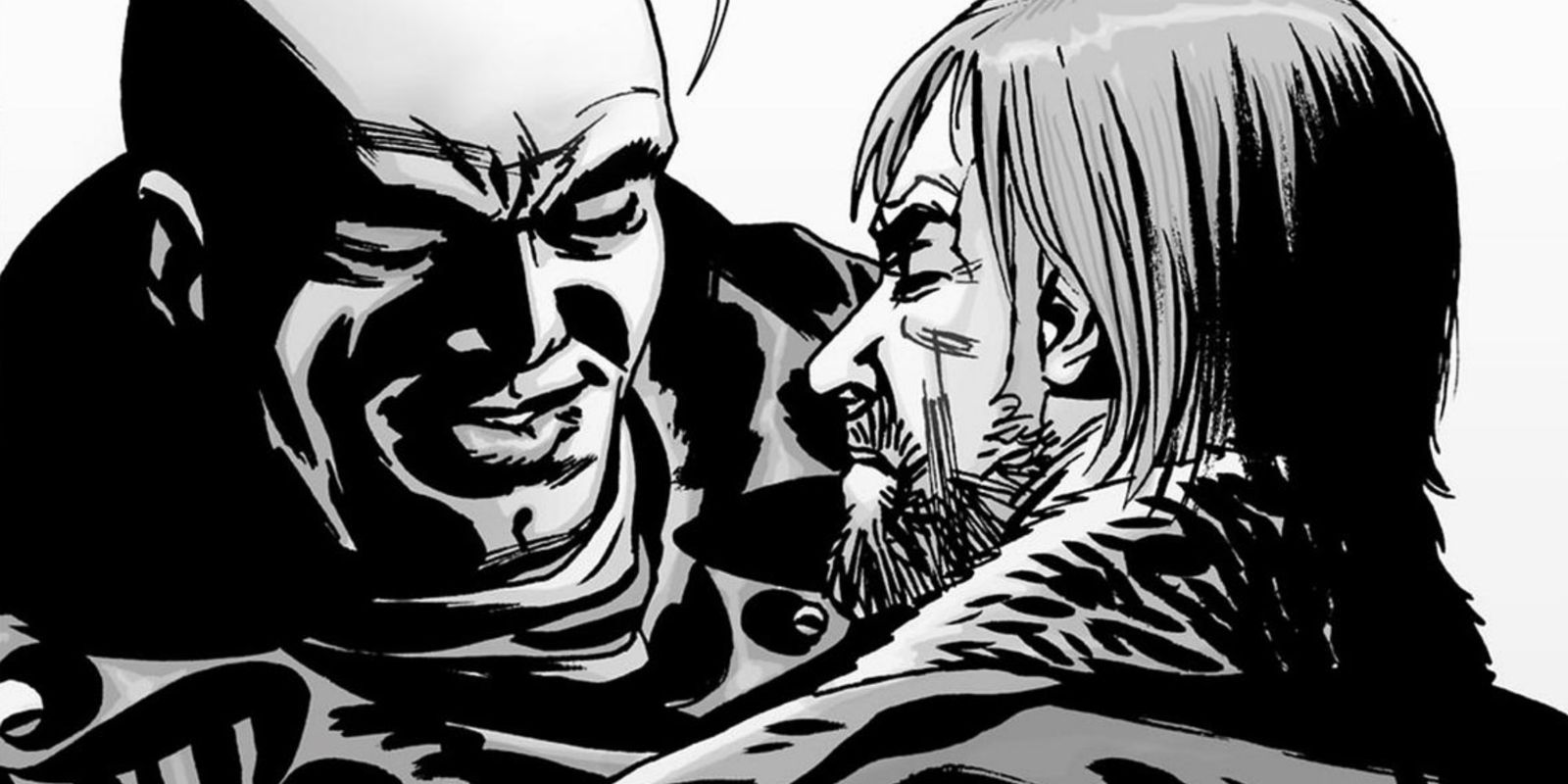
The Walking Dead Deluxe #112, written by Robert Kirkman, with art by Charlie Adlard, is one such example. Declaring the ability to produce chapters such as this one, as part of his ongoing saga, "a real luxury," Kirkman explained why these kinds of dialogue set-piece issues became more appealing to him as the comic progressed.
As the author notes, this issue sacrifices an arc for more time spent in this incredibly tense moment, a fraught summit between arguably the franchise's two most impactful characters, resulting in a classic Walking Dead war of words.
Robert Kirkman Explains How He Grew More Comfortable Eschewing The "Beginning/Middle/End" Rule
The Walking Dead Deluxe #112; Written By Robert Kirkman; Art By Charlie Adlard; Color By Dave McCaig; Lettering By Rus Wooten

In the "Cutting Room Floor" section of The Walking Dead Deluxe #112, Robert Kirkman reflected on the virtue of what he calls a "simple issue," meaning that, while it light on action, it moved the story of Rick and Negan's blood feud forward in a critical way. Kirkman wrote:
I love simple issues. The plot of this issue is Rick comes home, talks to Negan, they argue. It's a real luxury when you've gotten to issue #112 to be able to do issues like this. Any confrontation between Rick and Negan was electric enough to carry a whole issue. In a perfect world, every issue of a comic would have some form of beginning, middle, and end, so that there is some sense of resolution, and there's some form of payoff for the purchase of the issue. BUT when you've been running this long and things are as established as they are, you do have the leeway to do "interesting/memorable nugget" issues. Where the issue can be two characters having a memorable and important conversation, or some kind of single scene or moment that will have a huge impact on the series. I feel I did those more and more as the series progressed, and I don't regret it at all. Those kinds of issues are the most fun.
As Kirkman notes, part of the success of an issue like Walking Dead #112 rests on Rick and Negan's ability, as characters, to shoulder the weight of an extended dialogue scene. Further, it relies on a level of trust and patience a longrunning series like Kirkman's instills in its readers.
"The Walking Dead Deluxe" Continues To Offer Unique Insights Into The Construction Of The Walking Dead
Robert Kirkman On "Nugget" Issues

In other words, once a reader has bought into a series, and stuck with it long enough, the series' author can take more liberties with the issue-by-issue pacing, including indulging in issues like The Walking Dead #112, which are largely devoted to a single scene. It is, of course, a consequential scene, and that is also essential to what makes it, as Kirkman calls it, an "interesting/memorable nugget issue." While it is not the climactic moment of Rick and Negan's relationship, it is a major step toward the eventual climax of their protagonist/antagonist dynamic.
Kirkman has previously pointed out his own penchant for devoting whole issues to exposition, his love of cliffhangers, and his particular style of "page-turner moments," and now "interesting/memorable nugget issues" can be added to the list.
Issues Like "Walking Dead #112" Highlight Why Rick And Negan Were At The Heart Of The Walking Dead
Their Dialogue Was Tenser Than Any Action Scene

As Robert Kirkman noted, it is easier to devote an entire issue to two characters talking when you have developed characters like Rick and Negan, and that in itself is a testament to the methodical, detailed work the author put into making The Walking Dead a great story. With a protagonist and antagonist as edge-of-your-seat compelling as they proved to be, the story was better served by letting them take the spotlight; while The Walking Dead's action scenes were always exciting, its true greatest moments came in issues like this one.


-1750897898-q80.webp)

-1742803037-q80.webp)